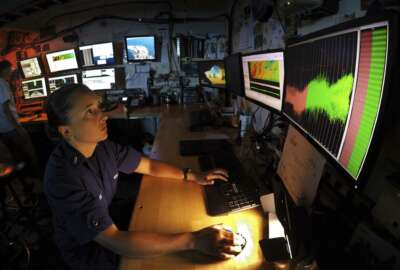

The size of the Environmental Protection Agency has shrunk by 16% since 2009, according to members of the House Science, Space and Technology Committee.
Members of Congress on both sides of the aisle seem to agree: The federal scientific workforce could use more care and attention after several years of staffing losses.
The Environmental Protection Agency workforce declined by 3.9% over the last four years and dropped by 16% since 2009, Bill Foster (D-Ill.), chairman of the House Science, Space and Technology Oversight and Investigations Subcommittee, said Wednesday during a hearing on the federal scientific workforce.
Staffing cuts started during the Obama administration, when EPA offered early outs and retirements in 2013 and 2014, said Betsy Southerland, the former director of science and technology at the agency’s water office.
By the time the Trump administration arrived and implemented a hiring freeze, EPA hadn’t backfilled the positions that were left vacant from the previous administration, Southerland said.
And though Congress largely disregarded former President Donald Trump’s proposed budget cuts to the agency, funding has remained flat for the last several years, she added.
EPA offered another round of buyouts and early retirements in 2017, though only a few hundred employees took the offers.
“I can tell you from personal experience that managers and staff in EPA are doing everything they can to compensate for the critically low staff levels, while also struggling with out-of-date information technology and lack of cutting-edge scientific equipment,” Southerland said. “The lack of staff and resources has forced EPA to focus primarily on those rules with statutory or court-ordered deadlines. Rules without deadlines, no matter how important for public health and environmental protection, are often postponed for years or take years to propose and promulgate.”
Staffing levels also declined or stagnated at other federal science agencies.
Energy’s Office of Nuclear Energy lost more than 20% of its workforce between 2017 and 2019, Foster said.
The Centers for Disease Control and Prevention lost 187 scientific staff before the pandemic, said Andrew Rosenberg, director of the Union of Concerned Scientists’ Center for Science and Democracy.
“We recognize that demography is part of the driving force of this loss, but the inflow of new talent has been squeezed as well,” he said. “Fellowships were curtailed and recruitment was stagnant.”
Members of the House subcommittee acknowledged staffing losses have been a long-festering problem at many federal scientific agencies, and the reasons behind workforce shortages are familiar ones.
“Our recruitment methods and onboarding procedures are really archaic,” Rosenberg said. “I know this as a government manager from years ago. I also know it from my students when I was in academia subsequent to that. The mechanisms for brining people on board erect so many barriers that by the time a real offer is in place, then they’ve had other offers if they’re really excellent and really want to move forward. A lot of these are self-inflicted wounds. It’s not because there aren’t people there in a very diverse workforce that we could bring on; it’s just we’re not doing it effectively.”
Few agencies rely on interns as a way to inject young talent into the pipeline. Agencies hired just 4,000 interns to term or permanent positions in fiscal 2018, compared to 35,000 interns in 2010, according to a recent assessment from the Office of Management and Budget.
The government also has a brand management problem, said Max Stier, president and CEO of the Partnership of Public Service.
He said government shutdowns, hiring freezes and negative rhetoric about federal employees do little to sway young talent to stick with an already difficult and cumbersome federal recruitment process.
“The reality is that the system is breaking down along multiple points,” Stier said. “Unless you actually deal with the full set of system failings, you’ll wind up maybe improving the situation but ultimately running into another barrier farther down the pike.”
Career fairs and other marketing campaigns might help get the word out, Stier said, but agencies have also have to rebuild their brand.
“If the people coming to those fairs or even people more broadly at the university haven’t been introduced the opportunities that exist in government, if they’re instead thinking about a brand that has been tarnished, then you haven’t helped yourself a lot,” Stier said. “If the process of hiring is so difficult that even if they’re interested once they get to the career fair, they’re turned away, that’s a big problem. If they ultimately get hired and they leave quickly then you’ve simply created a bad brand for the broader set of peers that they have.”
For Rosenberg, agencies will struggle to recruit and retain top talent as long as they to fail to reinstate collaborative relationships with career scientists. President Joe Biden signed a memo early on in his administration, which was designed to raise the profile of career federal scientists and make data sets and other information more publicly available.
Rosenberg said Congress should take another step farther and codify scientific standards in law.
“That gives scientists more assurance that the work that they do and the evidence that they gather will actually be presented as scientific evidence, not manipulated for other reasons,” he said. “Lots of other things go into decision making, but you shouldn’t manipulate the scientific evidence to justify a decision.”
Copyright © 2025 Federal News Network. All rights reserved. This website is not intended for users located within the European Economic Area.
Nicole Ogrysko is a reporter for Federal News Network focusing on the federal workforce and federal pay and benefits.
Follow @nogryskoWFED


